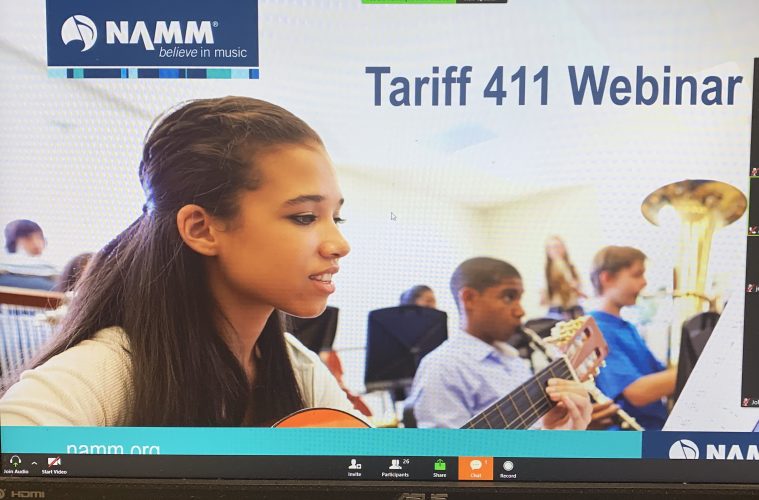To give both MI retailers and manufacturers the latest regarding tariffs being imposed by the United States upon China, vice versa, as well as potential tariffs that could be implemented by the U.S. on imported Mexican products on June 10, NAMM on June 6 hosted its “Tariff 411 Webinar.” Moderated by NAMM’s director of regulatory affairs Mary Luehrsen, the webinar featured speeches from Jim Goldberg, attorney at Goldberg & Associates, as well as Chris Cushing and Leo Coco from Nelson Mullins.
Currently, a limited number of MI products are subject to a 10-percent tariff, which can rise to 25 percent on June 15, stated Goldberg. However, the U.S. Government could choose to impose tariffs of up to 25 percent on many MI products including pianos, organs, stringed instruments, keyboards, percussion and more, he added. A final decision of this more-expansive tariff is unlikely to be made until after the June 28 and June 29 G20 meeting in Osaka, Japan, when U.S. president Donald Trump will meet with Chinese leader Xi Jinping, noted Cushing.
Exemptions to those products on the tariff list can be sought. There has been about a 46-percent success rate for those who have thus far sought exemptions, said Cushing. MI retailers and manufacturers can get involved, should they choose to do so, in an effort to exempt musical instruments from the list. Webinar speakers recommended filing public comments, which are sent to the U.S. Trade Representative (USTR) as opposed to appearing in Washington, D.C., to make comments in person. The deadline to file public comments — which can be viewed by anyone — is June 17.
Cushing recommended that individual retailers and companies file public comments, as opposed to a trade organization like NAMM. “Nothing against a trade organization, but an individual can have much more clout,” he said.
As for what can verbiage can appear in the public comments, the webinar offered several tips, including:
- Music education programs in K-12 schools nationwide and the musical life of every family would suffer with proposed 25-percent tariff on imported musical instruments and equipment from China.
- With new tariffs, students/families in urban and rural communities would have greater difficulty purchasing or renting instruments and equipment; school districts, faced with greater costs, could shrink or even eliminate music education programs.
- Many affordable beginner instruments are made in China and young students quickly outgrow their instruments; young violinists will go through as many as four different sizes of violin by the time they get to high school.
- Musical instruments are a discrete consumer product with high inherent commercial/retail value: a 25-percent tariff would decrease access and musical opportunities.
- Tariffs on musical instruments and the imposition of greater costs to consumers would impact the musical and cultural life of all communities in the U.S.
Regarding deadline and other details, webinar panelists said to file comments to the USTR as soon as possible at www.regulations.gov. Enter the docket number USTR-2019-0004 and click “Search.” Find a reference to this notice and click on the link titled “Comment Now!” Although you may submit comments via the web-based text box, the USTR prefers comments submitted by attachment, such a Word doc or searchable PDF. Panelists added that those who choose to file public comments should reference specific tariff subheadings, in this case, Harmonized Tariff Schedule (HTS) category 9200 merchandise (musical instruments and related accessories).
Copies of the commentary can also be sent to Luehrsen at maryl@namm.org.
Mexican Tariffs
On May 30, the U.S. president stated a 5-percent tariff on Mexican imports would be coming if immigration enforcement could not be improved. Should that tariff be enforced, it will be implemented on June 10. The percentage of the tariff would increase monthly, with the possibility of a 25-percent tariff on Oct. 1.
Panelists stated there could be a court challenge to try to prevent these tariffs, but proceedings would take effect after the tariffs are implemented. Congress could also take action, but it would need to survive a presidential veto.
“The thought in Washington is [the tariffs] will happen,” said Cushing.


